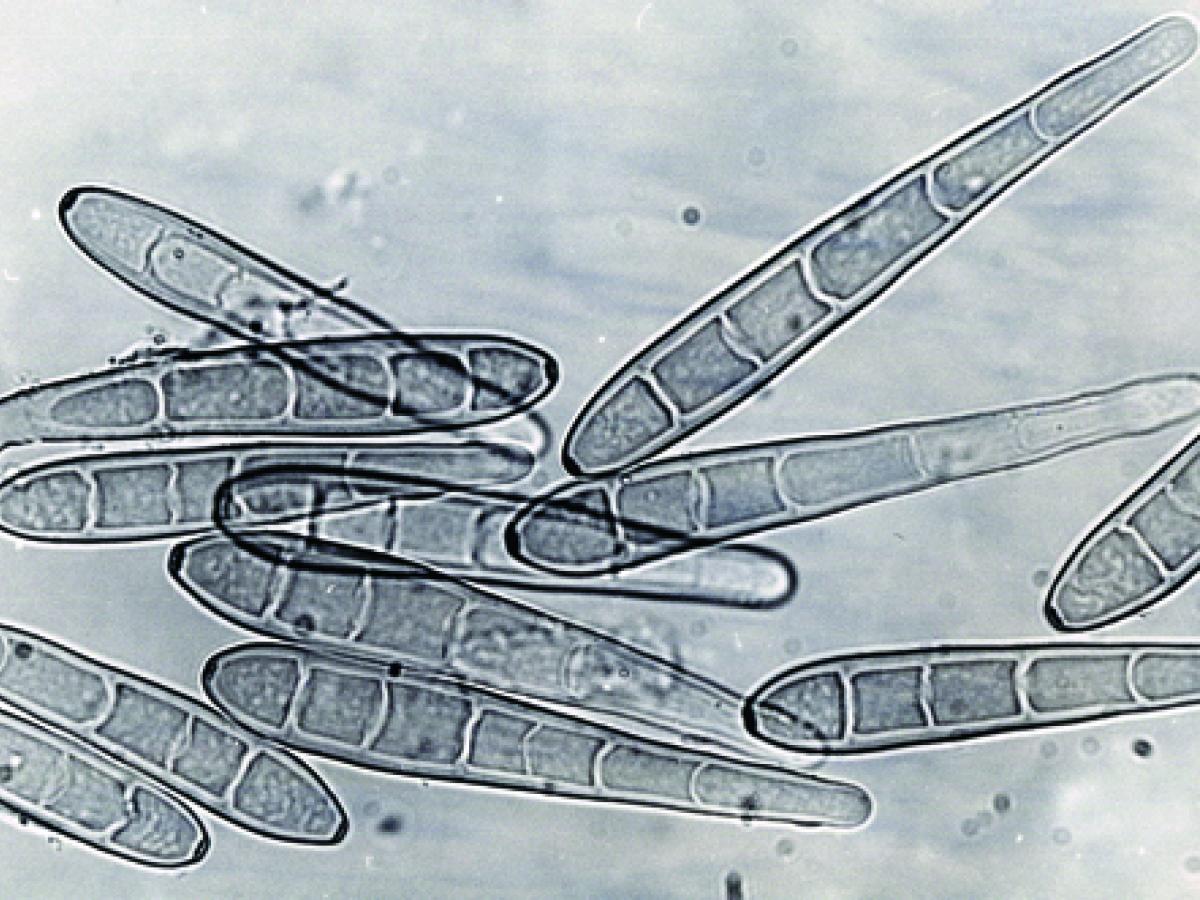Drechslera
McGinnis et al. (1986b) have reviewed the isolates from human and animal disease purported to be Drechslera or Helminthosporium and concluded that all pathogenic isolates examined actually belong to the genera Bipolaris or Exserohilum.

Conidia of Drechsler spp.
RG-1 organism.
Morphological description:
Colonies are fast growing, suede-like to downy, brown to blackish brown with a black reverse. Conidia are pale to dark brown, usually cylindrical or subcylindrical, straight, smooth-walled, and are formed apically through a pore (poroconidia) in a sympodially elongating, geniculate conidiophore. Conidia are transversely septate (phragmoconidia), with the septum delimiting the basal cell formed first during conidium maturation. Germinating is from any or all cells and the hilum is not protuberant.
Key features:
Dematiaceous hyphomycete producing sympodial, pale brown, cylindrical or subcylindrical, transversely septate poroconidia.
References:
Luttrell (1978), Ellis (1971, 1976), McGinnis (1980), McGinnis et al. (1986b), Sivanesan (1987), Rippon (1988), de Hoog et al. (2000, 2015). Also see Descriptions for Bipolaris, Curvularia and Exserohilum.
